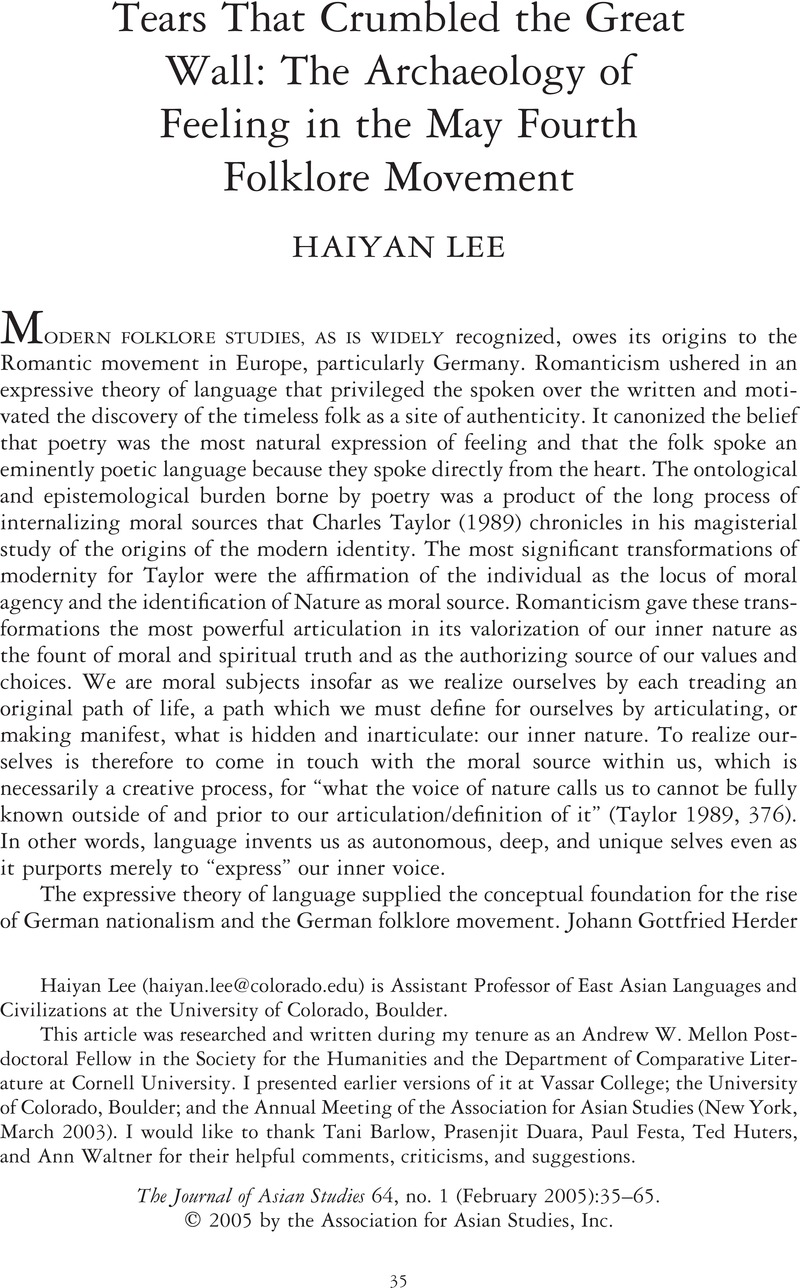Crossref Citations
This article has been cited by the following publications. This list is generated based on data provided by Crossref.
Lee, Haiyan
2008.
Chinese Films in Focus II.
p.
243.
Sohigian, Diran John
2011.
Confucius and the Lady in Question: Power Politics, Cultural Production and the Performance of Confucius Saw Nanzi in China in 1929.
Twentieth-Century China,
Vol. 36,
Issue. 1,
p.
23.
Thurston, Timothy
2018.
A Careful Village: Comedic Dialogues and Linguistic Modernity in China's Tibet.
The Journal of Asian Studies,
Vol. 77,
Issue. 2,
p.
453.
Gvili, Gal
2019.
Gender and Superstition in Modern Chinese Literature.
Religions,
Vol. 10,
Issue. 10,
p.
588.
Zhao, Jamie J.
2024.
Speaking Bitterly, Desirably and Queerly:
The Jinxing Show
as Queer Chinese TV
.
Journal of Intercultural Studies,
p.
1.



